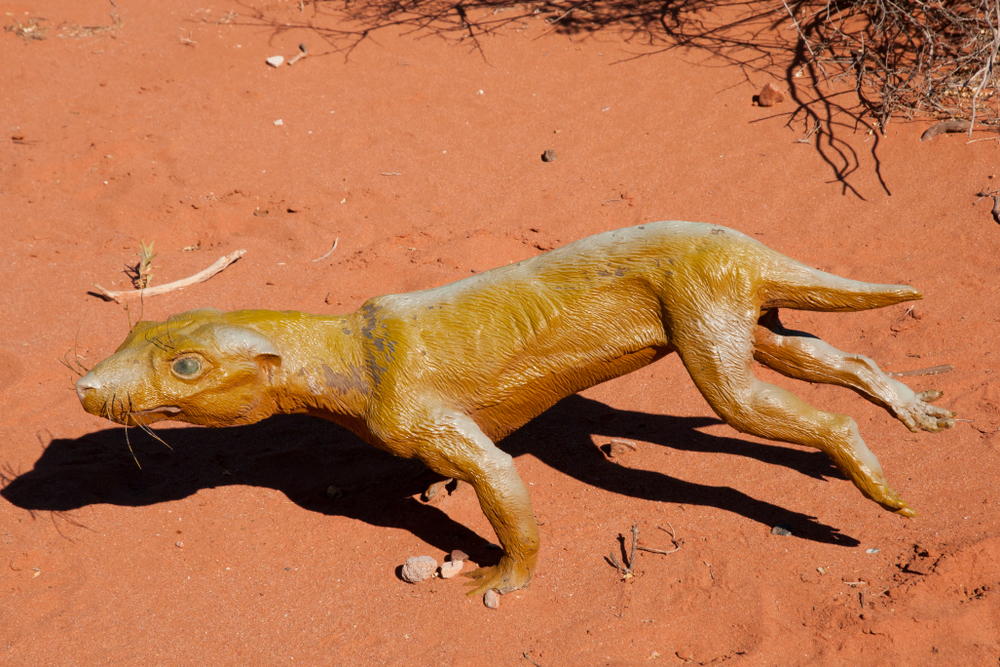
How many species live on Earth? We don’t know, but estimates currently range between 5.3 million and 1 trillion. Many creation narratives, including the first chapter of Genesis, acknowledge the stunning multiformity of life on our blue and green planet. But a group of ancient mammal-like reptiles called cynodonts prove that many parts of creation do not fit into neatly defined categories.
A Death and Rebirth Cycle
During the Triassic Period, two supercontinents covered our planet. There was Laurasia in the north, which contained parts of modern Asia, North America, and Europe. Gondwanaland was the bigger of the two, covering the south half of the planet. It, too, encompassed several huge landmasses: the Indian subcontinent plus Zealandia, Australia, Africa, South America, Antarctica, and the Arabian Peninsula.
Massive changes during the Triassic set the stage for the Jurassic, the famous age of the dinosaurs. The Great Dying occurred about 250 million years ago, claiming 90% of marine life and 70% of land-dwelling species. But the Triassic is also part of the Mesozoic Era, which is called the Age of Reptiles for one major reason; reptiles were the dominant form of life on Earth. Dinosaurs began emerging during the Triassic and lived on land, in the oceans, and in the skies.
Cynodonts: The Bridge Between Reptiles and Mammals
Reptiles gained dominance during the Triassic. Eventually, this led to the enormous dinosaurs that have captured our imaginations—Tyrannosaurus, Triceratops, and Corythosaurus, to name a few. But around 260 million years ago, a strange breed of reptiles had quietly evolved: cynodonts.
Live Science writer Laura Geggel describes cynodonts as looking like “scaly rats.” The first of these dog-sized animals looked nothing like their distant thunder lizard cousins. While none of them classify as mammals, most species had mammalian characteristics, including dog-like teeth and rounder skulls. They also had wider cheekbones, thanks to larger zygomatic arches above their jawbones, and likely had more developed jaw muscles than other reptiles.
By the Cretaceous Period, tritylodontids were among the last known cynodonts. They existed alongside early mammaliaforms, which had first evolved during the Jurassic Period. Cynodonts most likely laid eggs, but later species could have carried their young in pouches like modern marsupials. Cynodonts mostly disappeared before the mass extinction event around 65 million years ago. Mammaliaforms continued and diversified, eventually giving rise to megafauna, modern mammals, and hominids—including us.
Genesis, Evolution Theory, and Concordism
Genesis isn’t an evolutionary science textbook. Nor are there exact one-to-one parallels between it and scientific facts. Concordism does attempt to reconcile the two in some fashion. BioLogos editor Denis Alexander distinguishes between three types of concordism, which he labels A, B, and C. Type C concordism proposes that science and theology can actively dialogue with each other, but it cautions against applying imposing scientific meaning on Biblical texts. Meanwhile, it suggests interpreting ancient scriptures within their ancient Near East context.
With this in mind, let’s look at a portion of the Genesis creation narrative. Genesis 1:24-25 depicts God’s creation of land animals, namely reptiles and mammals. This passage uses Hebrew words referring to livestock, wild animals, and “creeping things” usually taken to mean reptiles and insects. They appear after aquatic creatures in verses 20–21 but before humans in verses 26–27. That’s close to the order in which scientific studies place them, supported by evidence such as the fossil record.
When Science and Religion Don’t Agree
What do Geggel’s “scaly rats” have to do with the Genesis creation story? Perhaps nothing. Ancient audiences didn’t even know about cynodonts or mammaliaforms. Type C concordism suggests that applying modern science to ancient Mesopotamian religious texts is problematic at best. Science speaks to the magnificence of life and the unfathomable time span over which our planet developed. Meanwhile, religion tries to answer why the universe exists—plus humanity’s role within creation itself.

